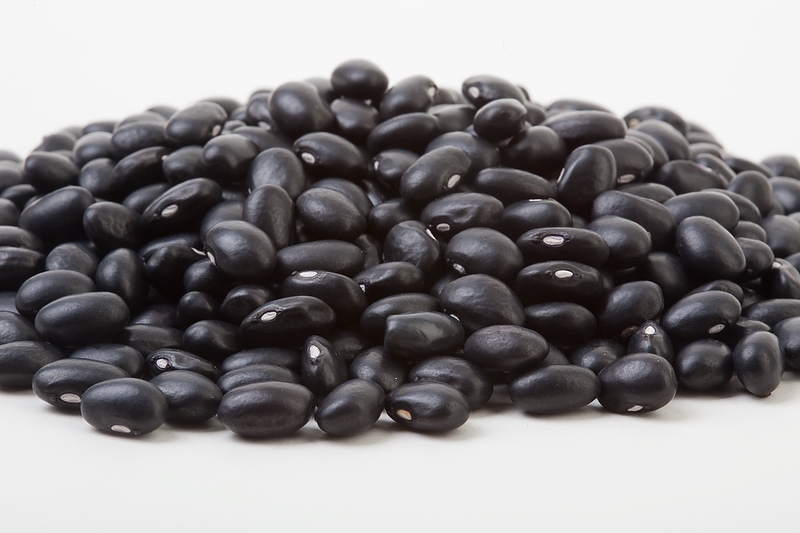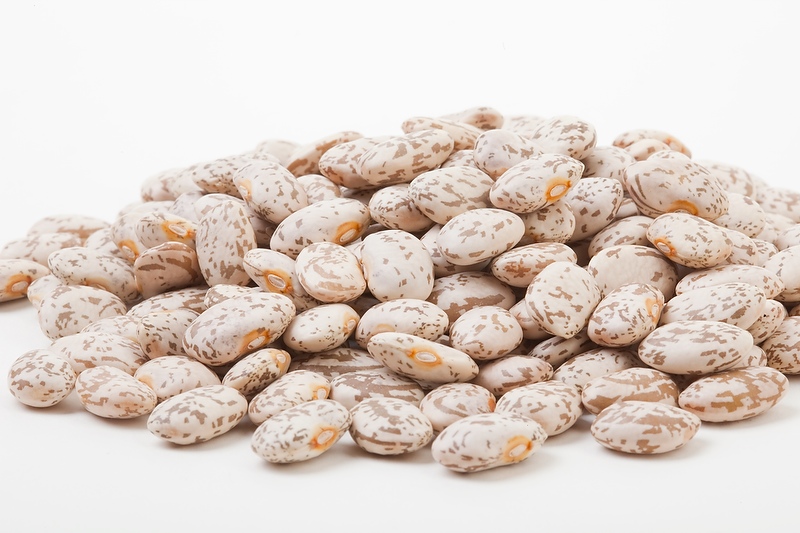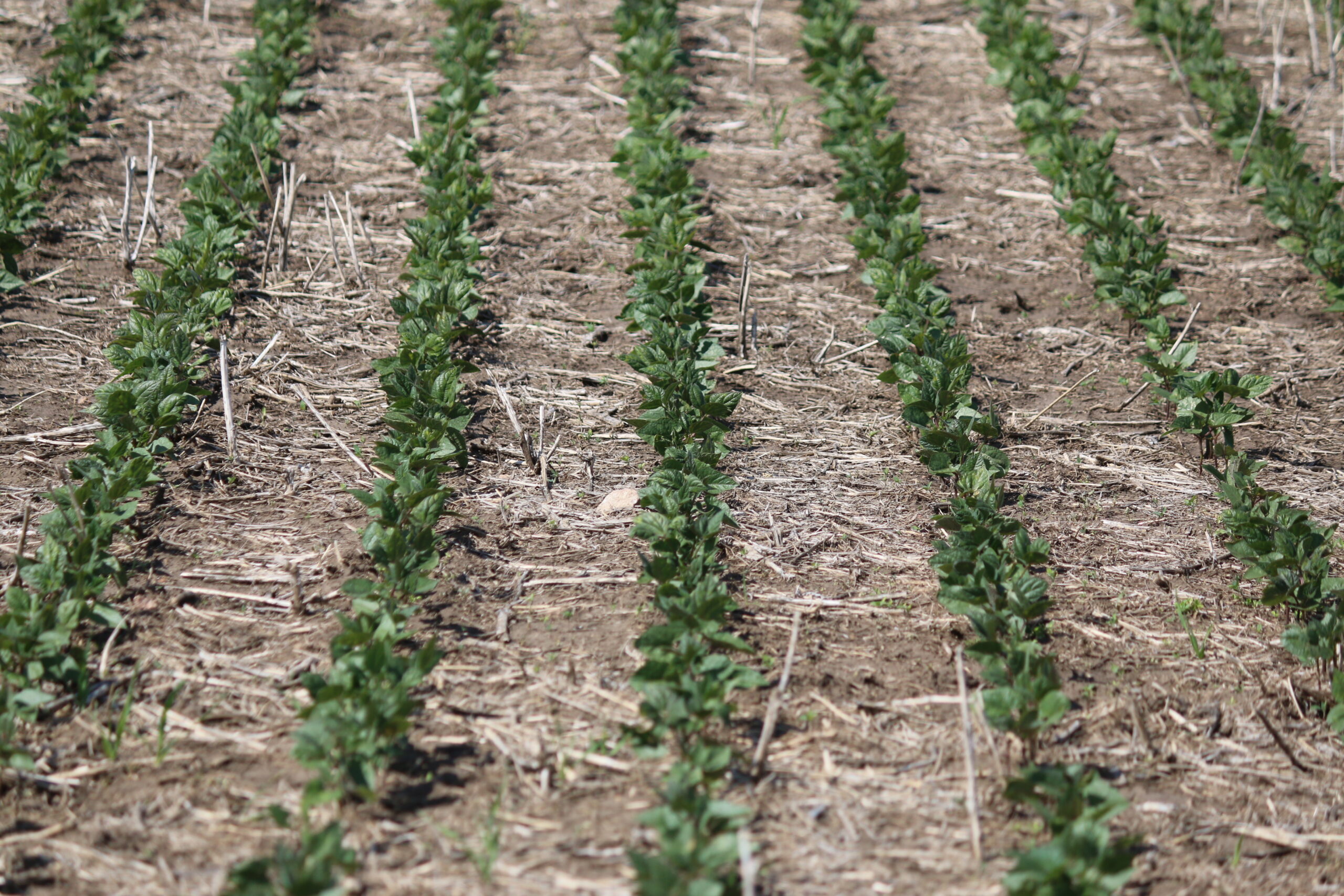Principal Investigator: Dr. Anfu Hou
Institution: Agriculture and Agri-Food Canada, Morden, Man.
Prepared by: Nate Ort, M.Sc.
This project was led by Dr. Anfu Hou of Agriculture and Agri- Food Canada (AAFC) in Morden, Man. It focused on dry bean variety development, including screening dry bean varieties close to commercialization for disease resistance, optimal seed quality, and yield potential. This project can be divided into four different but related activities:
Foliar and Root Disease Survey
It is important to gather geographic disease information obtained from provincial surveys. This information influences future research and breeding initiatives, extension messaging, and potential management practice decisions. In 2021, 40 Manitoba bean fields were surveyed for root rot, common bacterial blight, anthracnose, and white mould. The assessments included a visual evaluation, microscopic analysis, and the plant response to each disease. Fusarium root rot was found in all surveyed fields and severity ratings were between 3.0 and 5.9 with an average of 4.5 (0 = no disease, 9 = plant death). Furthermore, 83% of surveyed fields had average severity ratings greater than 4.0, which can lead to yield reductions. Based on these results, this remains the most prevalent root disease of dry bean in this growing environment.
Common bacterial blight was observed in 98% of surveyed fields and its infection frequency within a field was between 0.3 and 23.3% (8.6% average). Halo blight was found in two fields with an average of less than 1% of the field infected and white mould was only found in one surveyed field with 0.3% leaf infection. Anthracnose and rust were not detected in any of the surveyed fields. The Manitoba growing conditions in 2021 were hot and dry, a likely reason for low disease incidence and severity ratings.
Genetic Evaluation of Marsh Spot and Seed Hardness
Marsh spot and seed hardness are important factors that affect economic seed quality. It is crucial that desired seed quality characteristics are achieved. A marsh spot resistant and a susceptible variety were cross-pollinated, and the resulting seed was grown between 2015 and 2019 in two soil types near Morden, Man. Analysis of phenotypic data of 138 recombinant inbred lines (RILs) based upon 10 site- years was conducted and results showed that the marsh spot disease ratings were stable and highly heritable (greater than 83%). Marsh spot resistance was linked to two manganese transporter genes and could help understand the genetic mechanisms of this disease in cranberry common bean.
Dry bean seed hardness can affect end-use cost and processing quality. The seed hardness of 200 dry bean lines differing in market classes grown in Morden and Carman, Man., were evaluated. In this study, “stone seeds” (seeds that do not absorb water and cook well after soaking overnight) were influenced by genetics (66.8%) and environment (remaining variation). The genetic analyses of seed hardness traits showed additive effects and has potential to be a valuable resource in future breeding initiatives. This investigation is ongoing.
Dry Bean Variety Development for Western Canada
New varieties must be frequently developed and tested in different geographic environments to stay ahead of evolving pests, to improve yield and grain quality, and to complement new or altered agronomic management practices.
Long season wide row dry bean registration trials were conducted at four Manitoba locations in 2021: Morden, Winkler, Carman, and Portage la Prairie. There were 25 new entries and ten check varieties tested for important plant traits including pod height, maturity, yield, and seed size as well as screened for common bacterial blight, anthracnose, and white mould. Trial results have been submitted to the Prairie Grain Development Committee to support dry bean variety registration in Western Canada.
The Manitoba Pulse and Soybean Growers’ regional variety trial was conducted at AAFC Morden. There were 41 and 16 varieties tested in wide- and narrow-rows, respectively. Yield and plant traits such as flowering time, plant height, and maturity were measured, as well as common bacterial blight resistance. In addition, 22 early maturing lines were tested in the short growing season zone in Melita, Man. Additional trials were conducted at Morden and in the cooperative trials in Saskatchewan.
Identifying New Sources of Resistance to Anthracnose, Common Bacterial Blight, and White Mould
It is important to screen new crop varieties and lines for tolerance to specific diseases while evaluating yield performance. Dry bean breeding lines from three cooperative entries in Western Canada (Manitoba, Saskatchewan, and Alberta) were assessed for seedling reactions to anthracnose races 73 and 105 in growth chambers. A common bacterial blight nursery was set up to screen breeding lines from the AAFC Morden trials, and the entries in the long season wide row co-op trial were evaluated in a white mould nursery.
A promising indoor controlled environment system for evaluating marsh spot was developed. This will speed up disease screening for marsh spot in the future and ultimately result in a more efficient dry bean breeding program.
Key Findings
- Root rot remains the most prevalent root disease of dry bean in Manitoba and common bacterial blight (CBB) was the most prevalent foliar disease occurring in 98% of the fields surveyed.
- Phenotype (physical) and genotype (genetic) data, as affected by the diseases in question, was collected for dry bean populations with known genetic backgrounds. This information has been communicated in peer-reviewed journals and will be an excellent resource for other dry bean breeders currently working on disease resistance.
- A large volume of breeding lines and varieties were screened for resistance to CBB, anthracnose, white mould, and others. The lines and varieties that have effective resistance will move one step closer to commercialization, and the genetic results will be used to speed up and enhance future dry bean breeding efforts.




